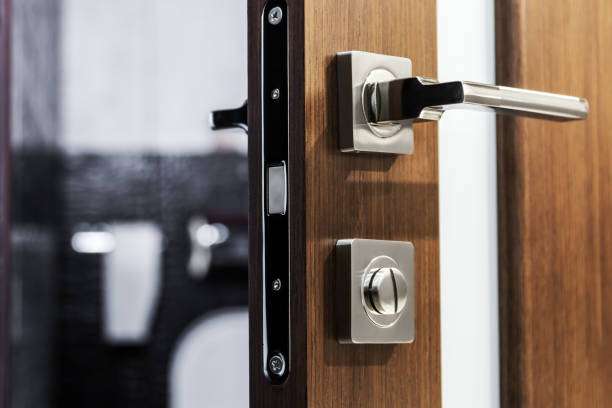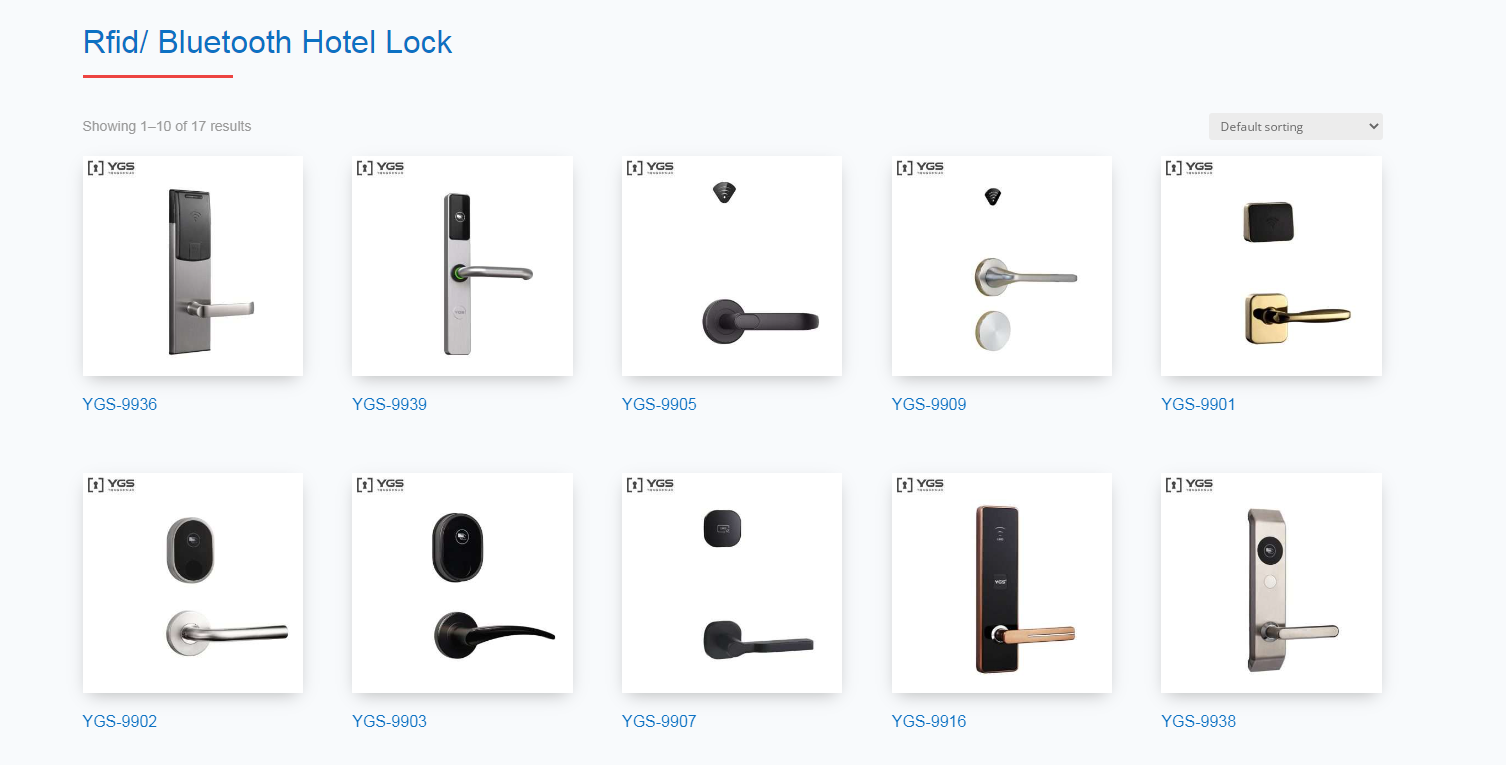If you’re in the market for a new lock for your home or business, you may be interested in learning more about “what is a mortise lock”. Here, we’ll delve into the basics of mortise locks, including their history, how they work, installation details, applications, and more.
Whether you’re a homeowner, business owner, or simply interested in learning more about the world of security, understanding the fundamentals of mortise locks can help you make informed decisions about the type of lock you need. Let’s get started.
What is a mortise lock?
As we mentioned earlier, a mortise lock is a type of lock that features a mortise or pocket. This requires a rectangular hole or pocket to be cut into the edge of the door to allow the lock body to fit inside.
With a larger panel design and a more stable lock mechanism, mortise locks are generally considered to be more secure and durable, and are therefore commonly used in various settings.
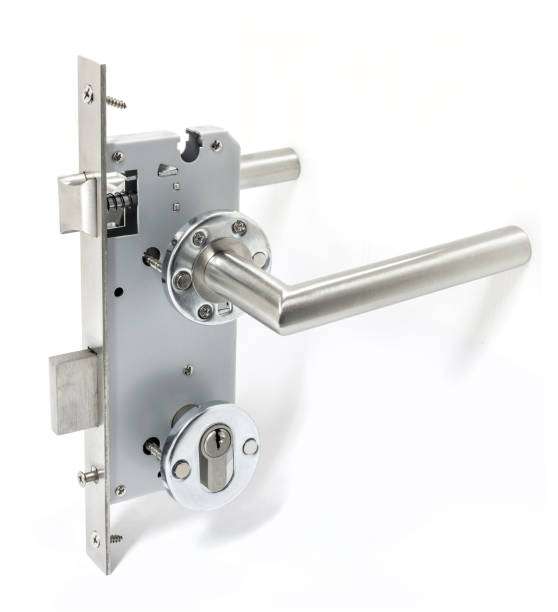
History
Perhaps many people may not have noticed, but mortise locks have been around for several hundred years.
They may not be flashy, but they are ubiquitous and relate to various aspects of our daily lives. Let’s explore their history of them together!
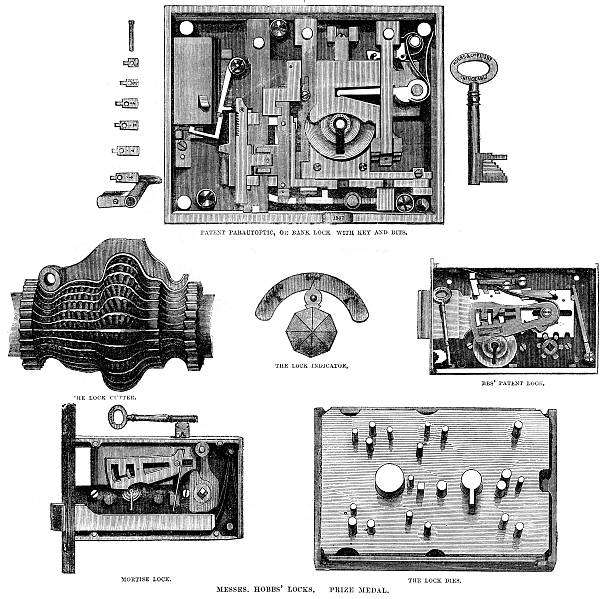
In the 18th century, mortise locks were first used in America and combined with handles for quick unlocking.
However, they were considered expensive and difficult to obtain, so they were often used only in the most expensive and formal rooms of that time.
Therefore, their popularity was not high.
Later, Warded locks come into life, this type of lock only allowed keys with matching notches to rotate freely and unlock the latch.
Until the early 19th century, Warded locks were widely used in Europe. However, due to its requirement for physical depth, it is now rarely used.
In 1865, Linus Yale Jr. invented the pin-tumbler lock with springs, placing the pins and springs inside the door so that shorter keys could be used.
Mortise locks have undergone continuous development and innovation over hundreds of years and are still the most commonly used type of lock today.
Do you really understand the mortise lock?
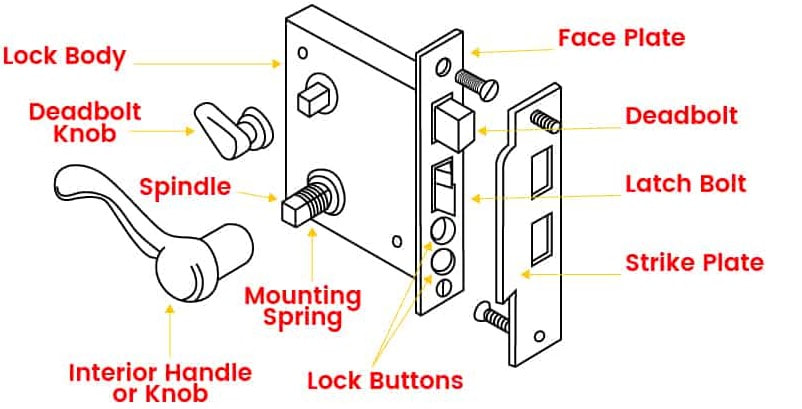
A mortise lock is made up of several different parts that work together to provide a secure locking mechanism. Traditional mortise lock parts include:
- Lock body: The mortise lock body is the main component of the mortise lock and is usually installed inside the mortise cut-out in the door. It contains the internal workings of the lock, including the dead bolt and latch bolt, and is secured to the door by screws.
- Lock cylinder: This is the key part of the lock that use with a key and is responsible for locking and unlocking the lock. It is typically inserted into the lock body through the front panel and can be removed and replaced if necessary.
- Keyway: This is located inside the lock cylinder and is used to insert the key. Its shape usually matches the specific type of key used by the lock.
- Escutcheon plate: This is a decorative cover that is installed above the keyway and mortise lock mechanism. It comes in a variety of styles and finishes and can be customized to match the door’s aesthetic design and surrounding décor.
- Strike plate: This is a metal plate that is installed on the door frame opposite the lock body. It includes a hole or opening that the lock’s bolt or latch engages when the door is closed and locked.
- Deadbolt: This is a thick and sturdy bolt that extends into the door frame and provides additional security. It is typically operated by turning the key or thumb turn and is designed to prevent the door from being forced open.
- Latchbolt: This is an important component of the lock and is the most common type of latch mechanism. The latch bolt is primarily controlled by a spring and can keep the door closed when the lock is engaged.
Mortise Lock installation
1. Prepare installation tools.
Mortise lock, drill, chisel, tape, door wadge, square, hammer, auger bit, screwdriver, pencil, tape measure.
2. Make sure the position of the door lock. Measure the height of the handle from the bottom of the master door. Commonly installed at a height consistent with the aesthetics of the human body. (Normally 1050mm.)
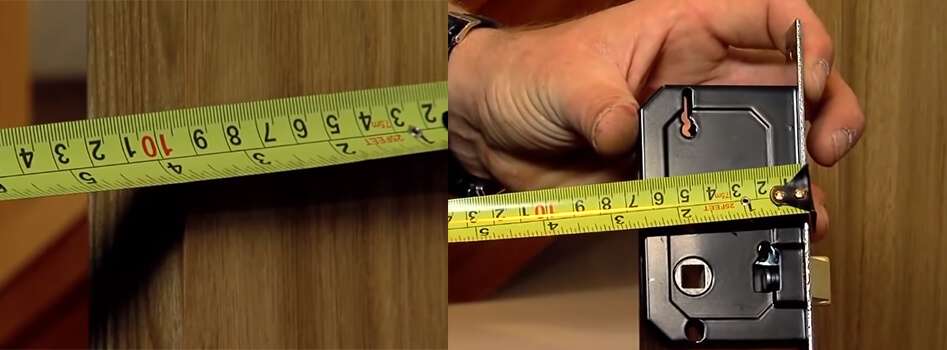
2. Mark the position of the lock body hole on the door. Line up the spindle/handle hole and mark the top and bottom ofthe lock body.

3. Dig holes in the door according to the marks.

4. Install the lock body, lock front panel, and back panel.
5. Mark the position of the strike box and plate.
6. Dig a hole for the strike box and finish installation
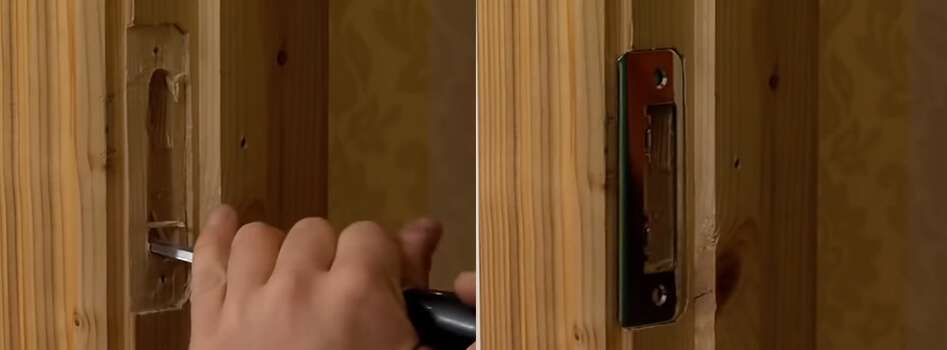
How mortise lock work?

A Mortise lock is a type of mechanical lock that works by controlling the position of pins inside the lock cylinder using a key, allowing it to be locked or unlocked.
Specifically, the lock cylinder contains multiple pins of varying heights, and only when each pin is at a specific height can the lock cylinder rotate smoothly. This means, only the corresponding key can manipulate the pins, making them have the same height as the cylinder’s holes, so that can turn the cylinder to unlock. Conversely, the pins will prevent the cylinder from rotating, and the lock can’t be opened.
Upon closer inspection, you will notice that the contours on each key are different, depending on the internal structure of the lock cylinder. Ideally, the internal structure of the lock cylinder should be unique to ensure the security of the lock.
Overall, the security of a mortise lock depends on the number and height of the pins, as well as the shape and structure of the key. You can increase security by using multiple pins and keys, or by using more complex key shapes and structures.
With the feature of customization, mortise door locks can be safer, more convenient, and more modernized than traditional locksets.
What type of doors are mortise locks for?
In practical applications, mortise door locks are often used for commercial door locks and home locks, here are some examples:
Residential door: Many residential communities use mortise locks as their access control system. This type of system can improve the security of the community and prevent illegal entry. Each household is equipped with unique keys, and only the corresponding key can open their own door lock. The system can also record the unlocking records for easy management and maintenance.
If you accidentally lose your key, don’t worry, the replacement cost is not high as you think. Because the mortise lock allows the lock cylinder and lock body to be separated, which means you only need to replace the lock cylindrical. The cost will be lower than replacing the entire lock.
Hotel room door: Many modern hotels still use mortise locks as their guest room door locks. This type of door lock can protect guests’ privacy and property.
The mortise door lock used in hotels generally includes multiple unlocking methods, with the most common lock method being card+key unlock. Some hotel locks the high-end hotels used also have biometric unlocking functions, like fingerprint unlock, face identify unlock, etc.
Generally, the key is the backup plan for unlocking the room, usually kept by the hotel front desk. Guests only need to insert the room card to open the door lock. Whether it is mechanical key unlocking or card unlocking, the hotel management system can check the records.
Office door: Many companies and organizations also use mortise locks as their office door locks. These types of lock can improve the security of the office and protect the confidential information of the company and organization.
The key is not given to every employee in the office, usually, only company managers and senior personnel have it. Just like other mortise door locks in other places, as long as the matching key is inserted into the lock cylinder, the door lock can be opened.
Why should you use mortise locks?
Security: Mortise door locks provide higher levels of security since they are designed to prevent unauthorized key duplication, which makes it harder for intruders to force open doors. This kind of lock is one of the safest lock types available and a popular choice for various settings, including residential buildings, commercial buildings, apartment buildings, and institutional buildings.
Functionality: Mortise door locks have a larger lock body, allowing custom functions such as adding deadbolts, smart card functionality, Bluetooth modules, and more.
Furthermore, they provide standard ANSI functions as well as brand-customized functions. They can also enable remote locking and electric options.
Durability: Mortise door locks are typically made of high-quality materials, such as alloys or stainless steel. Designed to withstand various physical attacks, including drilling, prying, and impact. They are also less likely to wear or break over time compared to other lock types such as cylindrical door locks or knob locks.
Customizability: Locks come in a wide range of styles and finishes, making them an excellent choice for customizing the look and feel of a space. They can be customized to suit the design of the door, surrounding decor, and unique needs of the building. And they offer various options available, including door thickness options, design options, decorative trim options, and more, which make them popular.
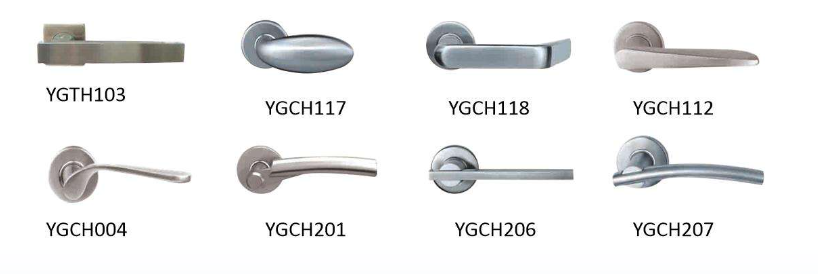
FAQ
What should I do if I feel tight or stuck when inserting the key?
Answer: There are usually two reasons and solutions for this:
1. Dust or foreign objects may have accumulated inside the lock cylinder. You can use a specialized cleaning agent to spray inside the lock cylinder, and then insert the key and turn it multiple times until the lock cylinder returns to normal.
2. The lock cylinder may have aged and rusted due to prolonged use. You can add lubricating oil to the lock cylinder and then try rotating the key.
What should I do if the mortise lock cannot be opened?
Answer: This may be because the key is damaged or there is a malfunction in the lock cylinder. You can try replacing the key with a new one. If it still cannot be opened, you will need to replace the lock cylinder. And it is best to have a professional installer perform the operation to ensure that the replacement lock cylinder meets standards and safety requirements.
How to identify a mortise cylinder?
Answer: With the popularization of smart locks, people tend to prefer more intelligent unlocking methods, such as key cards, passwords, fingerprints, etc. This has also led to a decrease in the frequency of key usage, and many smart lock manufacturers have adopted a hidden lock core design for aesthetic purposes. This means that the keyhole of the lock is not located in front of the lock face.
At this time, the rim cylinder has made a comeback. Like the mortise cylinder lock, the rim cylinder lock is also a kind of mortise lock.

So how do you differentiate between them? Here are two common methods for your reference:
1. Look at the position of the keyhole. In general, the mortise cylinder is a lock core that is directly inserted into the lock body, and its keyhole is usually located on the front panel. The rim cylinder is a separate lock core that is usually located on the edge of the front panel of the lock, which is more hidden, making it easy to give the impression that “rim cylinders do not have keyhole.”
2. Look at the installation process. If the lock core is installed on the lock body, it is generally a mortise cylinder. Otherwise, it is a rim cylinder.
Many people may be concerned about which lock core is more secure and stable, but in fact, security is not related to the position of the lock core but depends on the material, quality, and internal mechanism of the smart lock.
Online Enquiry Form
Related Blog
With more than 20 years of smart lock experience, YGS could provide a set of hotel door lock management solutions for your hotel business.
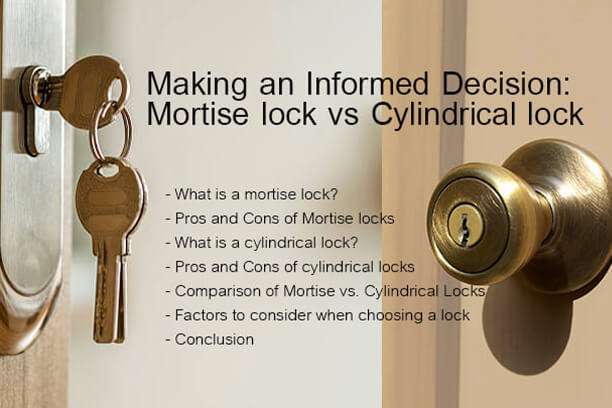
Feb 28, 2023 | Resources
When it comes to choosing a lock for your home or business, there are a lot of factors to consider. Two common types of locks that are often compared are mortise locks and cylindrical locks. While both offer a degree of security, they have significant differences in…
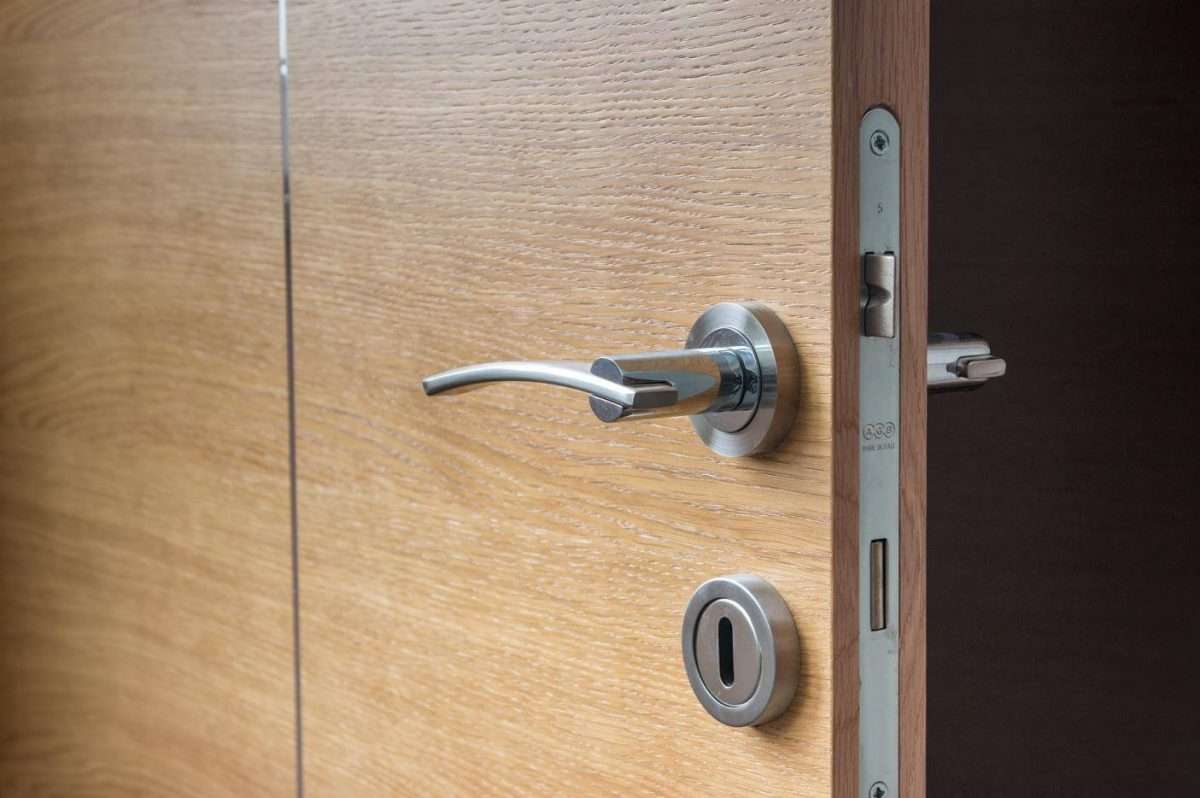
Feb 9, 2023 | Resources
Various types and styles of electronic locks have been developed over the years, and they are widely used in hotels, apartments, schools, office buildings, and other settings. Among them, the hotel is the first place to use electronic locks. The latest technology is…

Mar 3, 2023 | Resources
The hotel industry is dynamic and competitive, with businesses constantly seeking ways to improve efficiency and enhance guest satisfaction. Hotel management software features have become an essential tool in achieving…

Feb 13, 2023 | Resources
With the help of advances in technology, hackers can use an invalid room card to create a “master key” that can open the entire hotel building. As soon as the news came out, everyone was shocked. Many hotels have moved to higher security…

Mar 9, 2023 | Resources
If you are running a hotel, maybe you want to know everything about the hotel key card programmer. Here, we will explore the ins and outs of hotel key card programming and provide you with the information you need to understand…

Feb 10, 2023 | Resources
Hotel maintenance is a very important topic for discussion in the hospitality industry. Hotel maintenance not only affects the entire environment of the hotel but also affects the check-in experience for the guests. Therefore, the hotel should…

